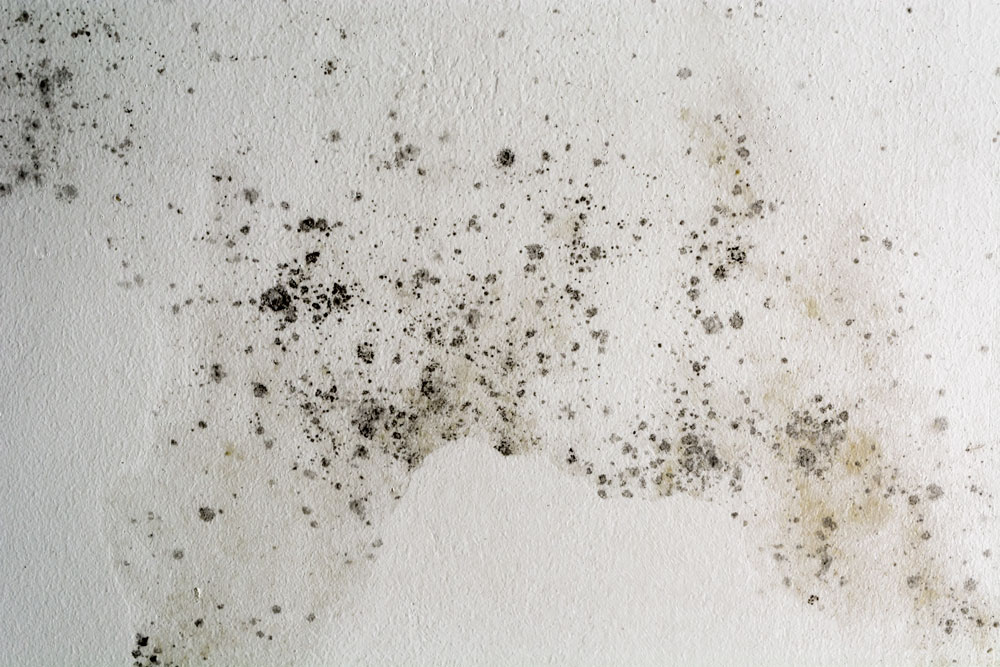How To Get Rid Of Mould On Walls Permanently
 CONTENTS
CONTENTS
- What causes mould on walls?
- What are the dangers of mould?
- How to get rid of mould on walls
- How to stop mould on walls
- Contact us today
Mould is serious problem that does not just affect the aesthetic of your wallpapered and painted walls, it can also put people's health at risk. You must have it removed by professionals as soon as you first spot it.
Here at ICE Cleaning, we offer quick and effective mould removal services. Our technicians are accredited by Dewpoint Professional and can eliminate all traces of the mould from your home. They are available across the UK, 24 hours a day, 7 days a week.
Keep reading to find out why mould is growing on your walls and how to prevent it in the future.
What causes mould on walls?
Mould grows in environments that contain excess moisture. It is usually caused on walls by condensation which forms when warm, humid air comes in contact with cold surfaces. But there are plenty of other reasons why mould could appear on your walls:
- There is penetrating and rising damp in your property
- Your home is poorly ventilated so humid air gets trapped
- Lots of steam is produced when you wash or cook, particularly in bathrooms and kitchens
- You are drying your clothes indoors
- There is a leak in your property, such as from a pipe, a crack in the roof, or broken guttering
What are the dangers of mould?
Mould can cause a range of health problems. Mould produces irritants and allergens which can trigger an allergic reaction. You may suffer from symptoms like sneezing, coughing, and a runny nose.
Black mould on walls can be particularly harmful as it can also release harmful toxins into their surroundings. They may cause more serious health problems, like respiratory issues including asthma attacks or chronic bronchitis. Some groups are more vulnerable to exposure:
- People with weakened immune systems
- People with respiratory problems
- People with skin problems
- Elderly people
- Very young children
It's crucial you take immediate steps towards removing any mould from your home to keep yourself and others safe.
Mould can cause damage to your property and possessions, too. It consumes organic material, like fabrics, building materials, and wooden furniture and could even lead to structural destruction, like damaging floorboards, which could make your property unsafe.
As mould grows fastest on plaster and drywall, your walls are especially vulnerable to mould.
How to get rid of mould on walls
There may be lots of mould killers on the shelves and mould cleaning hacks online, but you should always bring in mould remediation professionals.
Firstly, mould is very dangerous to clean as you will need to come in close contact with the harmful mould spores. You could touch or inhale them during the removal process.
Your removal method may also not be that effective. Bleach, for example, tends to just get rid of the mould stains and cannot remove all the fungus. Any left behind will quickly grow back.
Specialist cleaners, on the other hand, have the cleaning tools and personal protective equipment to remove all the mould safely. They will be able to identify hidden areas where mould grows, like behind wallpaper, within wall cavities, or beneath carpets, too.
They will even know how to treat delicate surfaces, like how to remove mould from walls without damaging paint.
Professionals can diagnose the root cause of your mould problem, as well, such as dampness and inadequate ventilation. By addressing these fundamental issues, they can give you peace of mind that your home stays mould-free permanently.
How to stop mould on walls
There are lots of ways to prevent mould growth in your home. You should start by making sure your home is well-ventilated. Regularly open windows to invite fresh air into your home and reduce indoor moisture levels.
Install extraction fans within high-humidity zones, such as kitchens or bathrooms, too, to decrease condensation.
Dehumidifiers serve as an efficient tool against excessive indoor humidity, as well. These devices operate by drawing moisture in the air inside and releasing drier air back into the room. This can reduce the likelihood of condensation build-up on walls considerably. Here are some other things you can do to prevent mould on walls:
- Make sure you dry clothes outdoors
- Remove condensation from windows by regularly wiping them down
- Consider applying anti-mould paint onto surfaces prone to damp conditions or areas previously infested with mould
Contact us today
With every mould remediation service we offer a lifetime guarantee* so if the mould returns, our mould experts will promptly remove it. In an emergency, our technicians can be on site within a matter of hours.
Get in touch with our team on 0208 066 0360 or at enquiries@icecleaning.co.uk to book our technicians for mould removal.
*subject to advisories

Speak with me today,
I’m here to help
By asking you a few questions either via phone or email I can immediately provide a realistic estimation of the cost.
You’re in good company. We’ve cleaned for the following commercial clients… View all

Why choose us?
- Cater to a wide variety of cleaning situations
- Nationwide coverage, available 24/7
- Cater to commercial and domestic clients
- Free survey provided prior to quotation
- Emergency response team
- Offer a bespoke service designed to suit all your needs
- All technicians hold professional health and safety qualifications, including BICSc, IOSH, Dewpoint Professional & Safe Contractor
We’re fully accredited
We place best practise, professional expertise and health and safety at the core of our business. We’re fully compliant with all legal obligations. You can view a list of our accreditations below, or visit our Health & Safety page for more information.











-RGB-small.1707319151.jpg)




















